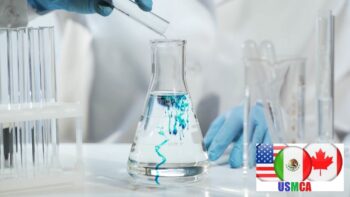By: Bonnie Kersch, Senior Trade Advisor, Braumiller Consulting Group
The USMCA is about to kick into full force on July 1st. Is your chemical company ready? Overall, if you’ve been issuing NAFTA certificates in the past and are already familiar with that process, you might be surprised to find that the USMCA process might allow for more of your goods to qualify than NAFTA did. Please use this article merely as a guideline. Check out the full text of the USMCA at https://ustr.gov.
Below are the steps to determine whether your goods qualify for USMCA:
- Start off by making sure that the tariff classification for your chemical is correct. If your HTS classification is incorrect, your USMCA determination will also be incorrect. If you need any help classifying your chemicals, please reach out.
- Determine whether your good is “wholly obtained.” Did you extract your chemical from the ground in either the U.S., Mexico, or Canada and export it in the exact same state that it was in when you took it from the ground? If so, then you can stop the process now. Congrats! You can use Preference Criterion A and claim USMCA. Unfortunately, this will not apply to very many of the chemicals that you are producing. More likely, you will need to keep going in this process.
- For chemicals classified in Chapters 28 – 38, there are some new rules to review. I’ve listed them below, but please know that there are exceptions to each rule, and please consider this the Reader’s Digest condensed version, if you will:
Rule 1: Chemical Reaction Rule
A good in these chapters is considered to be an originating good if the good is a result of a chemical reaction that took place in either the U.S., Mexico, or Canada.
Rule 2: Purification Rule
If a good in these chapters is the result of purification, that is, removal of at least 80 percent of existing impurities, in the territory, it is considered to be originating.
Rule 3: Mixtures and Blends Rule
A good in these chapters is originating if mixing or blending in the territory results in the production of a good having essential physical or chemical characteristics that are different from the input materials.
Rule 4: Change in Particle Size Rule
A good in these chapters is originating if a change in particle size occurs in the territories.
Rule 5: Standards Materials Rule
A standards material produced in the territory is considered originating. A “standards material” (including a standard solution) is a preparation suitable for analytical, calibrating, or referencing uses, having precise degrees of purity or proportions that are certified by the manufacturer.
Rule 6: Isomer Separation Rule
If the isolation or separation of isomers from the mixtures of isomers occurs in the territory of one or more of the parties, the good is considered originating.
Rule 7: Separation Prohibition Rule
If your finished good has a different classification than its inputs, and this is a result of the separation of one or more materials from a man-made mixture, the good will only be considered to be originating if the isolated material underwent a chemical reaction in the territory.
Rule 8: Biotechnological Processes Rule
A good is considered originating if it undergoes a biochemical process in one of the territories.
4. If you’ve followed all of the steps above and still aren’t convinced that your product qualifies for USMCA, you should move on to the Product-Specific Rules of Origin.
5. If your product STILL doesn’t qualify, check out the de minimis rule, or calculate the regional value content.
At the end of the day, there are several ways to get your product to qualify for USMCA. If you ever need any help determining whether your product qualifies, please contact me bonnie@braumillerconsulting.com We’re happy to help!

